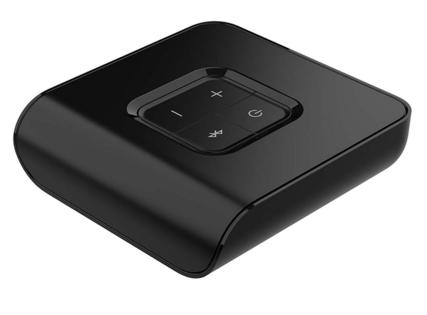Jim Rossman: Connecting hearing aids to your TV
Published in Science & Technology News
This week a reader writes, “I wonder if you could give me any suggestions on what would help me to hear the TV because my hearing is extremely impaired. I do have some expensive hearing aids that have lots of bells and whistles, BUT I can still never understand what is said without the (captions) and I love to watch rodeo and the (captioning) is HORRIBLE. We do have an older sound bar that doesn't work well at all.”
Regular readers of this column might remember that my day job is in the IT department at an audiology clinic, so I was happy to hear this reader already has hearing aids.
My No. 1 piece of advice for anyone struggling with hearing is to get your hearing checked by an audiologist and to get and regularly wear hearing aids if needed.
These days, many hearing aids also have Bluetooth in them to allow them to connect wirelessly to devices like your cell phone. When connected, incoming phone calls will be routed to the hearing aid directly. This is akin to wearing AirPods, for those of you who might be too young to deal with hearing aids.
Most major hearing aid manufacturers also sell a device that’s commonly called a TV streamer.
The designs will vary by manufacturer, but they are small boxes that have a Bluetooth transmitter in them that connects to a sound output on your TV.
With the TV streamer, the sound from your TV will be directly sent to your hearing aids, so you will get the best sound possible, depending on your hearing level, of course.
Before you buy the TV streamer, it is important to do a bit of research to make sure your TV has the right connection for it.
In the case of this reader, the TV streamer for her hearing aids connects to the TV via an output called TOS Link, or Optical Audio.
Not all TVs have TOS Link, but most do.
The TV streamer's web page should show a diagram of the connection, including labeling the needed outputs.
TOS Link is important because you can use it to provide sound for the TV streamer but the other TV speakers will also keep working so others in the room can hear the TV as well.
You can ask your audiologist for a TV streamer recommendation. Or if you know the model of your hearing aids, you can look on the manufacturer’s website and see what’s available.
There are some other solutions for connecting headphones to your TV. If you research them, make sure they allow simultaneous audio output to both headphones and speakers if others will be watching in the same room.
©2025 Tribune Content Agency, LLC.







Comments